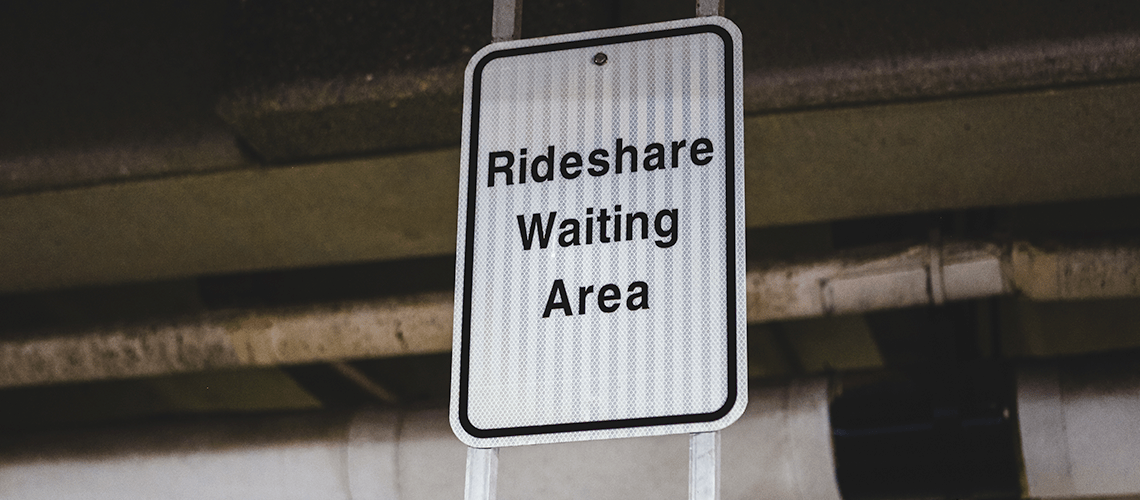Uber has spent a pile of cash to mislead riders that its concern for passenger safety never stops. Still, news headline after news headline of drivers sexually assaulting passengers tells another story. Unfortunately, Razavi Law Group (RLG) knows all too well that Uber’s stance on rider safety—especially for women—hits a roadblock at the intersection of profit and political influence.
In recent years, Uber has spent millions of dollars lobbying legislators for the passage of Proposition 22 and to codify less stringent background checks. The lax background checks inevitably lead to dangerous conditions for passengers.
The harshest critics of Uber’s platform compare it to digital hitchhiking with an app instead of a thumb. Let’s dig deeper to learn how Uber claims to keep its riders safe, the best practices you can use in an Uber, and how Uber deregulated safety measures in the taxicab industry in its rise to the top.
UBER SAFETY TOOL KIT
Razavi Law Group strongly encourages all riders to familiarize themselves with the safety features Uber offers on the rider app. We can’t stress this enough.
The safety toolkit is accessible by tapping the shield icon on the app’s map screen while you’re riding in an Uber. The toolkit includes a safety center for riders to find Uber’s policies and how drivers are supposed to behave. There’s also a sharing option, which lets you send your ride details and location to a trusted contact through GPS tracking.
A rider can tap the “911 Assistance feature” to see the GPS location of their ride, along with the vehicle make, model, and license plate number. In an emergency, a rider can tap the emergency button to connect to an emergency dispatcher. In select cities, including Los Angeles, the app will make the trip details available to the dispatcher electronically. Please note that this feature is not available in every city.
If a rider chooses to push the panic button, a representative from Uber’s 24/7 customer support team will allegedly follow up within a few hours.
UBER RIDER SAFETY REPORT
To ease rider fears and market safety under an avalanche of sexual assault headlines, Uber executives released Uber’s U.S. Safety Report to examine sexual assault data from 2017 and 2018.
“Safety should never be proprietary, and it’s our intention to make an impact well beyond our own company, encouraging others to be more transparent with their data and to share best practices that can make everyone safer,” Uber Chief Legal Officer Tony West told the media when the report was released.
In the report, Uber claims internal numbers found sexual assaults occurred in 0.00002% of the 5,000,000 million trips riders took over the two-year timeframe. Uber then deflects responsibility for the eight daily sexual assaults reported via its platform to cite the “20,500 instances of unwanted sexual contact in 2018 in the military.”
Razavi Law Group recognizes survivors of sexual assault often choose not to report the heinous crimes due to fear of not being believed, fear of being blamed for the assault, or fear of being shamed. The combination of the three is more than often debilitating for even the strongest of survivors. Razavi Law Group stands with survivors. Uber’s failure to take responsibility for a ride, marketed as the safest in the industry, that leads to sexual assault, is offensive in the least and negligent at the worst without actual genuine reforms.
Instead, Uber chose to showcase improved safety features and services, which still need to go into action.
The top reform is “deactivation sharing,” or providing the names of banned drivers on the platform for the most severe safety incidents with Lyft. The app rider feature for riders to verify their driver with a secure PIN but hasn’t fully started on every ride yet. The highly pushed Uber sexual misconduct and assault education for drivers is a simple email with a click box for approval. Razavi Law Group finds both to be inadequate, and ultimately in violation of the law.
DEREGULATION
The fact remains until Uber chooses to hire safer drivers through a more strenuous and thoughtful background check process, it can make all the technological reforms it determines, and the app will remain unsafe.
As part of its long-term business model, Uber’s primary focus has been to deregulate the taxicab industry. Before Uber, a livery driver—a person who drives a cab for a living—would face a fingerprint background check known as a livescan in the hiring process through the California Department of Justice. If the driver had an adult criminal history of physical or sexual assault in the fingerprint database anywhere in the US, the application was red-flagged for rejection.
It appears Uber convinced the California Public Utilities Commission (CPUC), which regulates the taxicab industry, to issue Uber a unique classification that relaxed the driver background check process. Uber successfully argued its use of app-based technology to dispatch drivers in personal vehicles was different than a taxi driver being hailed by a passenger from a curb.
Upon being classified as a Transportation Network Carriers (TNC), Uber then pushed for less stringent background checks minus the livescan fingerprint process to save money and streamline a longer list of drivers. An accessible workforce is vital in their pipeline due to high driver turnover from the low pay, lack of benefits, and long hours on the road.
Over concern, due to the weakened background check process and repeated assaults on passengers, the District Attorneys in Los Angeles and San Francisco teamed up for an investigation. As a result of the effort, the offices filed a joint lawsuit against Uber for misrepresenting its background check process as “industry-leading” for “misleading and false” statements about its screening process.
“The private background check companies employed by Uber do not have access to (California Department of Justice) and federal databases of criminal history repositories,” the district attorneys’ complaint stated. “The background check companies employed by Uber search for criminal convictions in commercial databases that do not index their records by unique biometric identifiers.”In Los Angeles alone, the investigation found 25 cases where Uber’s new, less stringent background check process failed, allowing registered sex offenders, identity thieves, burglars, and even a convicted murderer to become drivers.
BEST SAFETY PRACTICES
Razavi Law Group strongly contends until Uber updates its driver background check to include biometrics and other features, such as civil court background checks to screen for legal items such as domestic violence restraining orders, the platform will remain unsafe. To be even safer after familiarizing yourself with the rider app safety toolkit, follow Uber’s other standard advice.
Order your Uber inside a building or at least a well-lit area. Try to avoid traveling alone—especially late at night or early in the morning. Make sure to match the license plate number, make and model of the vehicle, and the driver’s name before entering. Always sit in the back seat. Tag a trusted contact on the app and even through a third party like Facebook’s live location to follow your ride.
Remember to trust your instinct and never compromise your safety due to embarrassment or fear of overreacting. If you feel unsafe, take steps from canceling the ride and demanding to be dropped off in a safe location to tapping the panic button to alert 911. If you try the panic button feature, and it doesn’t work, call 911 yourself. Let the dispatcher know the vehicle make and model, and location, including what direction you are going to the best of your ability. Cross streets can help them dispatch help even quicker.
And if you do find yourself in this situation, don’t forget to alert Uber and seek immediate legal advice. Razavi Law Group remains willing to fight for passengers who have been injured in an Uber or Lyft. Read more on how to find a personal injury lawyer for you.



